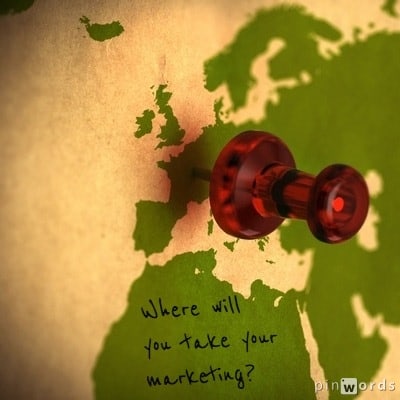 Communication.
Communication.
It’s what we think about, focus on, and strategize around.
It’s what we strive to make effective.
And it’s something that varies wildly across cultures.
For example, in America, making a V with your pointer and middle fingers means peace. In Britain, it means “screw you.”
In America, you would only kiss someone’s cheek if you knew them very well and felt close to them. Throughout Europe, it’s how people greet each other.
In Thailand, it would be strange to see someone putting a fork in their mouth. In America, that’s what forks are for.
And if you are marketing to audiences in more than one culture, it’s vital that you understand these nuances so that you can effectively speak to each unique audience in a way that they’ll understand.
So, what should you be thinking about if your content marketing plans span borders?
Well…
Spelling, Grammar, and Idioms
The simplest thing to take into account is the grammar, spelling, and language choices you make when writing content. Even in other English-speaking countries like the UK, Canada, and Australia, spellings and word choices vary greatly. In some cases, it’s as simple as adding a “u” to favorite if you are writing for a UK audience. In other cases, it’s as complicated as understanding that “pants” means “underpants” in the UK and cilantro is called coriander across Europe.
Since my own work frequently weaves its way through cultures that aren’t native to me, these are concerns that come up weekly. And still mistakes are made, like when I recently started a project that involves interviewing dozens of Italians about their towns and cultures.
I asked each interviewee to tell me what foods travelers should try in their region. And at the end of the question (which was by email), I said, “feel free to break it down by season.”
Both “feel free” and “break it down” are slang and don’t necessarily translate well for a non-native speaker. “Feel free” sounds like some sort of ancient shamanic blessing (I wish you all the freedoms of the universe, friend) and “break it down” sounds like a physical action. As a non-native speaker, perhaps I could understand the concept of breaking down a wall, but I’m unlikely to understand the concept of breaking down my words and ideas.
You can see how my poor Italian interviewees got a little lost—and why after a few confused emails I re-wrote not only that question, but reviewed the rest of them for other idioms or distinctly American phrasing.
The Importance of Mindset
While phrasing, spelling, and grammar are the most obvious things to change and to watch out for when it comes to marketing across cultures, there’s another equally important thing to keep in mind.
That thing? Cultural mindset.
In Elizabeth Gilbert’s runaway bestseller Eat, Pray, Love, she does a great job illustrating the difference in mindset between America and Italy—and how that difference impacts their marketing.
She says:
“This is very American, too—the insecurity about whether we have earned our happiness. Planet Advertising in America orbits completely around the need to convince the uncertain consumer that yes, you have actually warranted a special treat. This Bud’s for You! You Deserve a Break Today! Because You’re Worth It! You’ve Come a Long Way, Baby! And the insecure consumer thinks, Yeah! Thanks! I AM gonna go buy a six-pack, damn it! Maybe even two six-packs!…Such advertising campaigns would probably not be as effective in the Italian culture, where people already know that they are entitled enjoyment in this life. The reply in Italy to “You Deserve a Break Today” would probably be, Yeah, no duh. That’s why I’m planning on taking a break at noon, to go over to you house and sleep with your wife.”
I love this quote because it captures something we don’t often think about: Not only does marketing overseas mean different spellings, languages, imagery, and word choices, but it also means catering to different cultural norms and belief systems.
In America, for example, gay-themed ads are controversial and big corporations often shy away. In France, on the other hand, companies like McDonald’s embrace them.
In Japan, this Ronald McDonald ad is totally okay; American audiences would laugh…or maybe vomit.
Then there’s this ad from Finland, promoting milkshakes by featuring a close-up of cow udders. Would it fly with an American audience? Based on the commentary online, I’m going to say no.
Which is why understanding the cultural mindset of your target audience is just as important as studying the intricacies of language.
So, How Can We Keep Culture Top-of-Mind?
So, you get it. It’s important to pay attention to your language, grammar, spelling, and the mindset of your audience. The next question is how?
If you’re simply trying to serve the widest possible audience, familiarizing your team with basic spelling, grammatical, idiomatic, and cultural differences is a great start.
If you’re seriously targeting multiple cultures, hire a culture expert to consult on your content marketing—and make sure your focus groups and user testing happen with that target audience.
Apply Culturally Appropriate Guidelines to Your Content
Keep these ideas in mind when creating a style guide for your brand. Get started with this handy style guide template.


